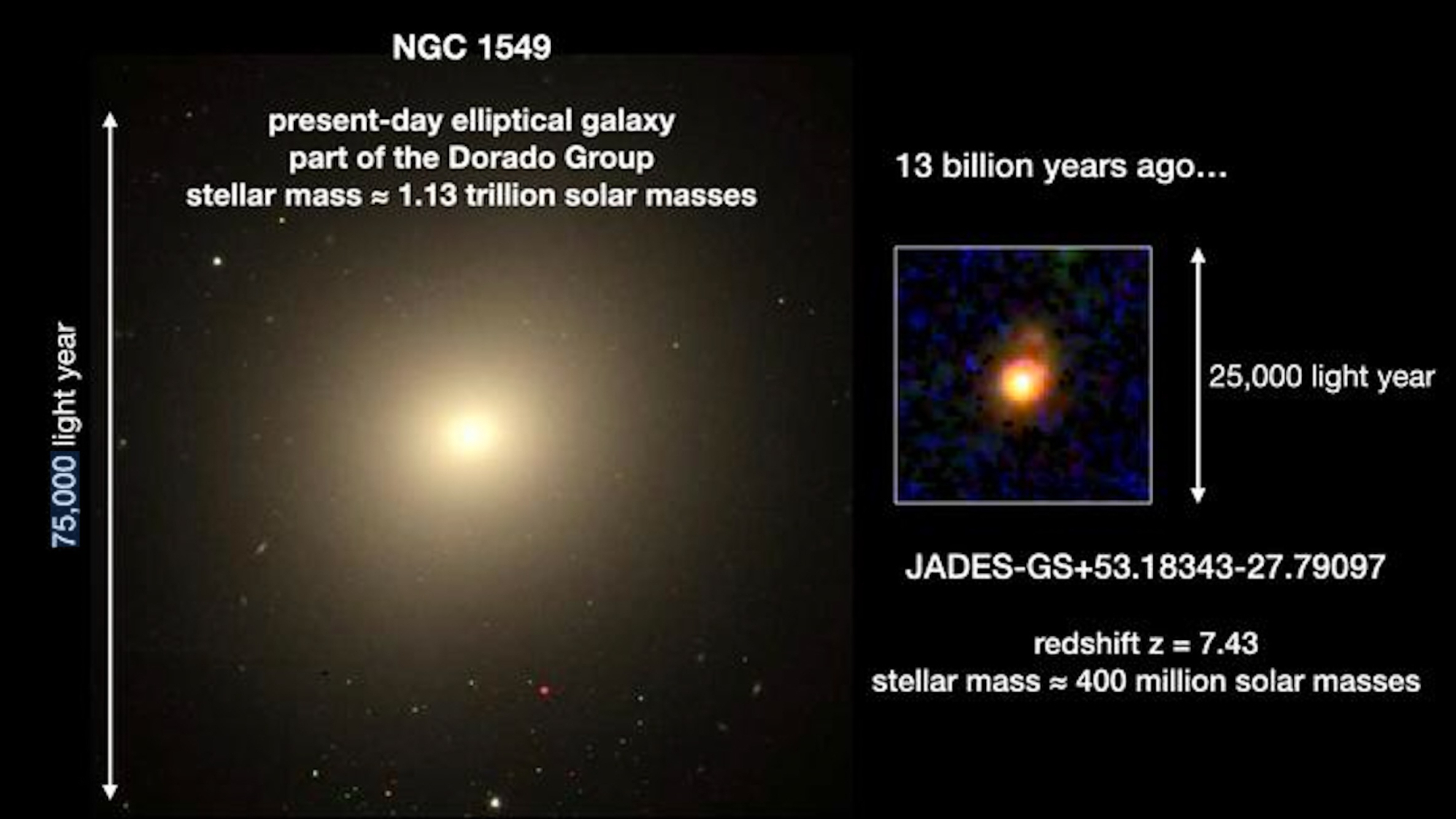James Webb Space Telescope spies 'inside-out' star formation in ancient galaxy (image)
JWST is helping us understand how the early universe ticked.

Galaxies in the universe today have come a long way from the first structures that emerged after the Big Bang. Galaxies like our own Milky Way are composed of hundreds of billions of stars these days, but things weren't always like this.
Now, researchers using NASA's James Webb Space Telescope (JWST) have peered back deep into our cosmic history, just 700 million years after the Big Bang, which occurred about 13.8 billion years ago. They studied an infant galaxy from that epoch to see how star formation differs from that of galaxies in the universe today.
The galaxy was observed as part of the JWST Advanced Extragalactic Survey (JADES) collaboration, and it was seen to be actively forming stars. Interestingly, this early-universe galaxy has a very dense core, with star concentrations in its center similar to that of galaxies in the universe today (which are composed of roughly 1,000 times more stars).
However, astronomers noticed that star formation was happening farther away from the core, with formation activity gradually rising toward the outskirts of the galaxy as it grew in size. Astronomers had previously predicted this "inside-out" star growth dynamic in galaxies this age with theoretical models, but now they have the observations to confirm their hypothesis.
Related: James Webb Space Telescope (JWST) — A complete guide
"One of the many reasons that Webb is so transformational to us as astronomers is that we’re now able to observe what had previously been predicted through modeling," study co-author William Baker, a PhD student at the Cavendish Laboratory at the University of Cambridge in England, said in a statement.
"It’s like being able to check your homework."
Get the Space.com Newsletter
Breaking space news, the latest updates on rocket launches, skywatching events and more!
Using Webb's data, the researchers were able to estimate the ratio of young stars to older stars, which they then converted into an average stellar mass and formation rate.
Stellar population modeling revealed older stars in the core of the galaxy. But the surrounding disc of gas and dust was undergoing very active star formation, doubling stellar mass in the outskirts roughly every 10 million years. The newborn stars likely then migrate toward the center of the galaxy, similar to how an ice skater brings their arms in to rotate faster.
"Therefore, we speculate that the following two scenarios are possible to build up this core. The first is continuous inside-out growth, where early disc formation took place in a very compact disc, forming the currently observed core," the authors explained in the paper, which was published online today (Oct. 11) in the journal Nature Astronomy.
"An alternative is that the disc formed first, suffered an infall of gas into the center due to compaction (possibly caused by instability triggered by the clump, which then forms the core. The disc would then re-form via new accretion of gas," they added.
Study lead author Sandro Tacchella says the team wants to observe more galaxies at a similar time in the early universe to see if they share these star formation dynamics. By investigating galaxies across time, astronomers will gain a better understanding of how galaxies grow and evolve to become the bustling behemoths we see today.
Join our Space Forums to keep talking space on the latest missions, night sky and more! And if you have a news tip, correction or comment, let us know at: community@space.com.

Conor Feehly is a New Zealand-based science writer. He has earned a master's in science communication from the University of Otago, Dunedin. His writing has appeared in Cosmos Magazine, Discover Magazine and ScienceAlert. His writing largely covers topics relating to neuroscience and psychology, although he also enjoys writing about a number of scientific subjects ranging from astrophysics to archaeology.
